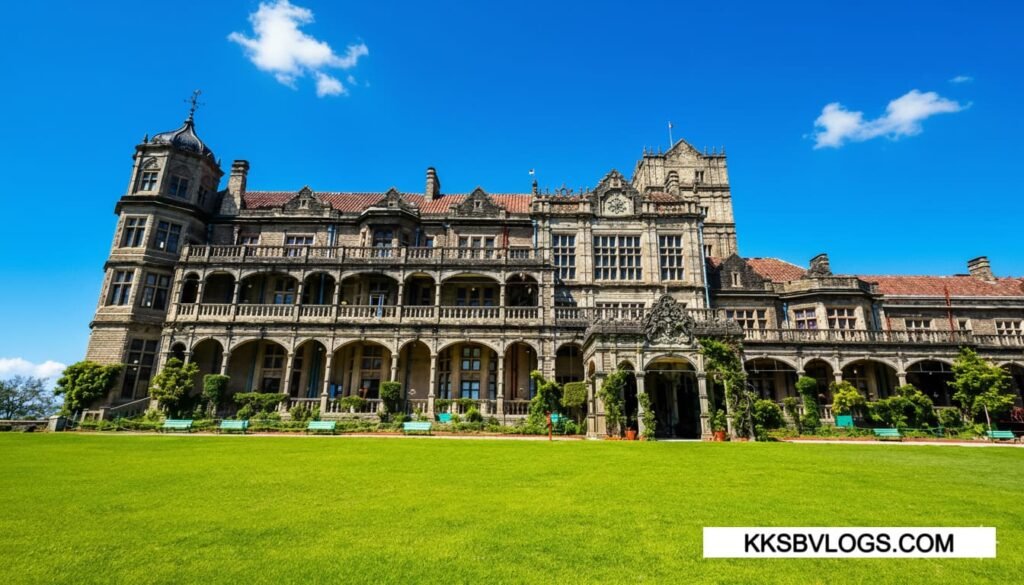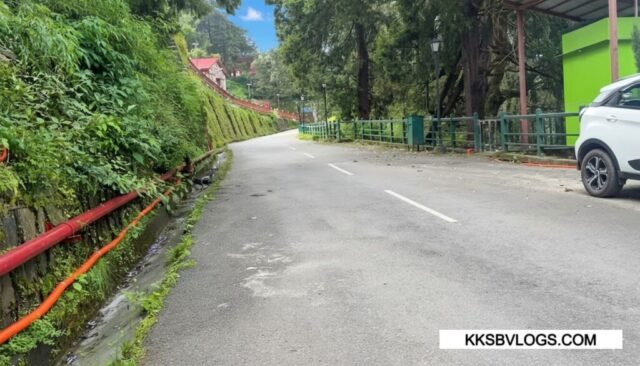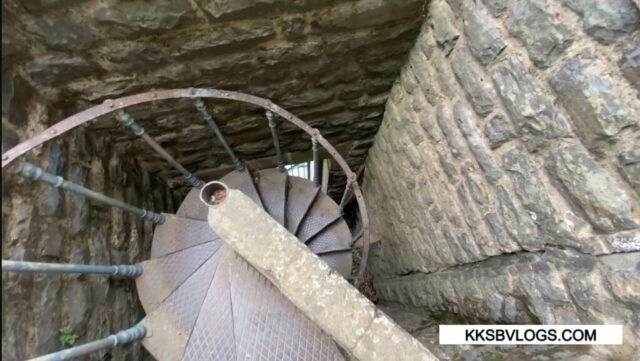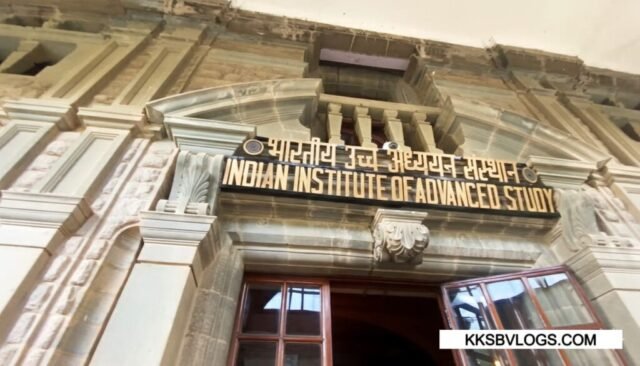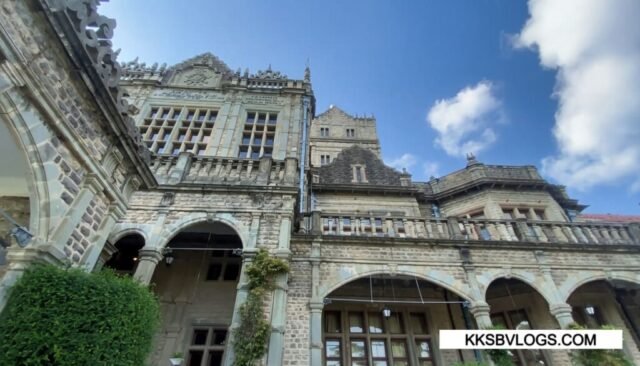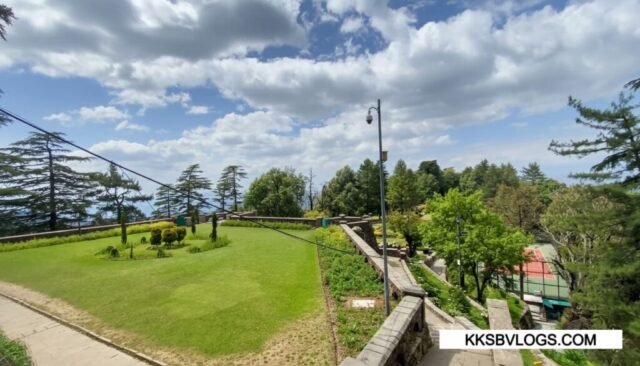1) Introduction
The hills of Shimla are world-famous for their colonial charm, toy train, and natural beauty, but this hill station also has an intellectual side that very few people deeply explore. The crown jewel of that side is the Indian Institute of Advanced Study (IIAS).
Advance Study Situated on Observatory Hill, this building was once the Viceregal Lodge – the political centre of British India. It was here that historic meetings like the Shimla Conference of 1945 took place, shaping the decisions that led to India’s independence.
Today, this building is a premier research institute – a dream destination for scholars in humanities, social sciences, and Indian culture. Scholars here receive fellowships and become part of an intellectual community.
For tourists, IIAS is Shimla’s grandest colonial heritage building where you can admire Scottish-style architecture, lush lawns, and panoramic valley views. It is a place that offers a unique blend of history, architecture, and knowledge all at once.
2) History & Establishment
2.1 British Era – Viceregal Lodge
Construction of the building started in 1884 and was completed in 1888. Designed by Architect Henry Irwin, it cost lakhs of rupees at the time – a massive budget in those days.
The Viceregal Lodge was the official residence of the British Viceroy. During its time, 7 viceroys worked from here. It was not just a residence but also the decision-making hub where the British rulers finalized many agreements that changed the political map of India.
The most significant moment was the Shimla Conference of 1945, where freedom leaders and British officials met. This conference is considered a turning point in the political negotiations of independence.
2.2 After Independence – Rashtrapati Niwas
After 1947, the building came under the President’s House and was declared Rashtrapati Niwas. Every summer, the President of India would stay here, making it their official retreat.
2.3 Birth of IIAS
In 1965, the second President of India, Dr. Sarvepalli Radhakrishnan, who was himself a philosopher and academician, decided that this building should serve as an intellectual hub. It was then converted into the Indian Institute of Advanced Study (IIAS).
From here began a new story – no longer just a colonial heritage building, it became a temple of academia in India.
3) Architecture & Design
The IIAS building is one of the most stunning architectural marvels of Shimla, designed in Scottish Baronial style, inspired by European castles.
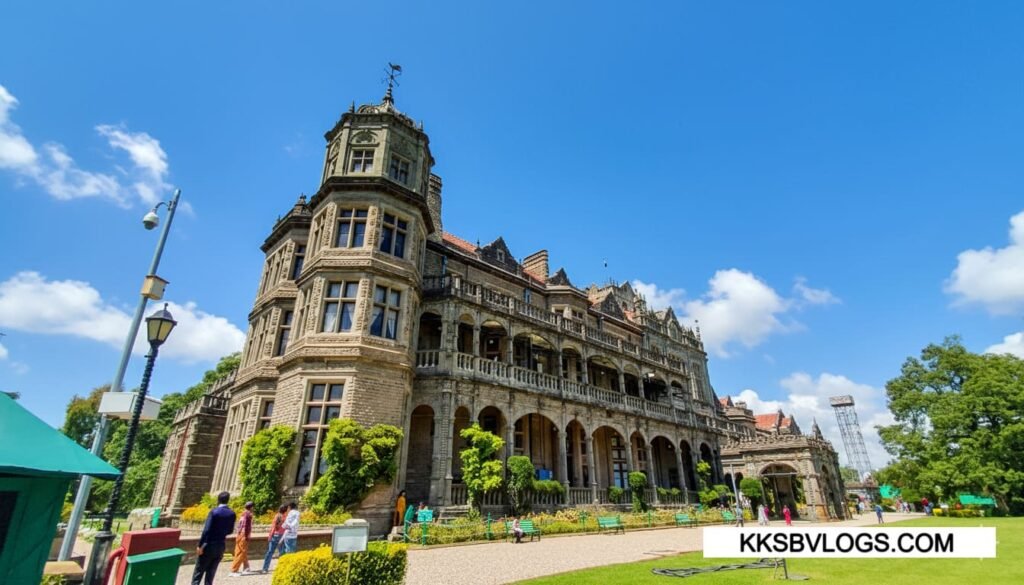
3.1 Exterior Grandeur
- Built with grey stone blocks that give it a strong and royal appearance.
- Steep sloping roofs, turrets, chimneys, and tall towers provide a castle-like feel.
- From wide verandas and balconies, one can enjoy panoramic views of Shimla and the Shivalik hills.
3.2 Interiors
- Extensive use of Burma teak, walnut, and cedar wood.
- Grand halls, high ceilings, and ornate fireplaces give the interiors a royal touch.
- The Library Hall is a jewel, preserving thousands of rare books and manuscripts.
- Stained glass windows and heavy wooden doors remain preserved in original British design.
3.3 Lawns & Gardens
The manicured lawns of IIAS look like a postcard view. Flowers, fountains, and lush greenery make the gardens vibrant, especially in summer. For tourists, photography here is a must-do activity.
3.4 Blend of Heritage & Purpose
For heritage lovers, this building is an architectural gem. For scholars, it is an intellectual sanctuary. Its grandeur still impresses visitors, while the silence inside inspires researchers.
4) Things to See at IIAS
The IIAS is not only a research institute but also a heritage site and tourist attraction. If you visit here, you must experience:
- Main Heritage Building (Viceregal Lodge):
- 19th-century colonial architecture that is breathtaking.
- Inside, you see Burma teak woodwork, vintage chandeliers, antique furniture, and stained glass windows.
- Guided tours show visitors limited halls and galleries.
- Library & Rare Collections:
- A world-class library with thousands of rare books, journals, and manuscripts.
- Not open to general visitors, but for scholars it is a treasure trove.
- Gardens & Lawns:
- Lush green lawns and manicured gardens in front of the building.
- 360° panoramic views of Shimla valley and Shivalik hills.
- A paradise for photography lovers.
- Heritage Furniture & Artifacts:
- Original British-era furniture is preserved.
- Antique fireplaces, carpets, and colonial paintings turn this into a living museum.
- Photography Points 📸:
- Photography is allowed in the lawns and outside the building.
- The combination of colonial architecture with snow-capped hills in the background is postcard-perfect.
5) Research & Academic Significance
IIAS is not just a tourist spot but also a prestigious academic hub that plays an important role in India’s intellectual landscape.
- Establishment for Scholars:
In 1965, under the vision of Dr. S. Radhakrishnan, the institute was established with the aim of creating a centre for independent and advanced research. - Global Reputation :
Research here covers humanities, social sciences, Indian culture, and comparative studies. Scholars from all over India and abroad apply for fellowships here. - Seminars & Conferences:
IIAS organizes regular seminars, workshops, and conferences, bringing together leading academicians from India and around the world. - Library & Research Material:
Rare manuscripts, journals, and archives are preserved in the library, making it a unique resource. For serious researchers, this collection is priceless.
👉 Today, IIAS is still considered a temple of knowledge, promoting both academics and culture.
6) Visitor Experience
For tourists, a visit to IIAS is a blend of history, culture, and natural beauty.
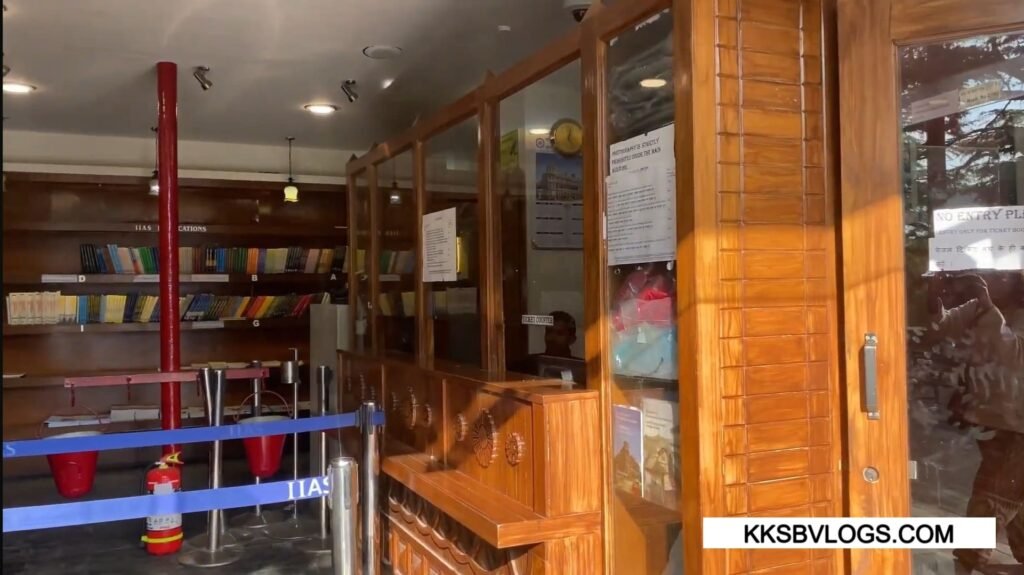
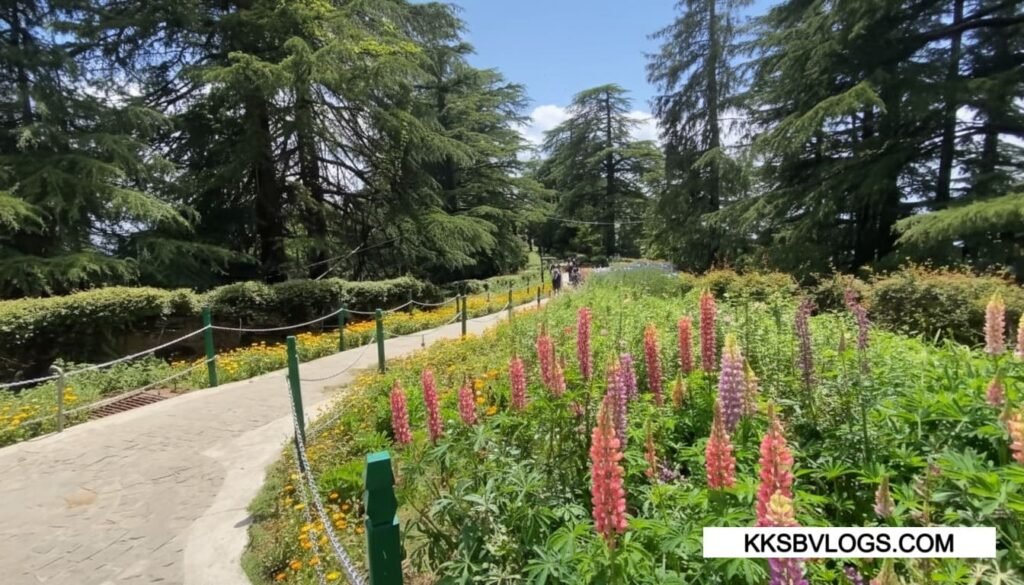
- Guided Tours:
Visitors can take limited guided tours (paid entry). Guides explain the history, architecture, and the important historical events that took place here. - Ticket & Entry :
- Indians: ₹40–₹50
- Foreigners: ₹85–₹100
- Students/Children: Concessional rates
Photography inside the building is not allowed, but gardens and exteriors are open for photography.
- Timings :
- Morning: 10:00 AM – 1:00 PM
- Afternoon: 2:00 PM – 5:00 PM
- Mondays closed
- Overall Vibe:
The moment you enter the building, you feel a royal aura. Walking through the gardens and taking in the valley view is peaceful. After the tour, visitors often relax on the lawns with coffee or snacks.
7) How to Reach IIAS Shimla
📍 Location: Observatory Hill, Chaura Maidan, Shimla, Himachal Pradesh
Though slightly away from the city centre, IIAS is easily accessible due to good road connectivity and local transport options.
- By Road:
About 3 km from Mall Road and The Ridge. Local taxis, auto-rickshaws, and private cabs go directly to the entrance. Self-drivers will find proper parking at Observatory Hill. - By Train :
The nearest railway station is Shimla (2.5 km), on the Kalka–Shimla toy train line, a UNESCO World Heritage Site. From here, taxis/autos are easily available. - By Air :
- Nearest airport: Shimla Jubarhatti Airport (~21 km)
- Alternative: Chandigarh Airport (~122 km), with a 3.5–4 hour drive to Shimla.
- Local Transport:
From the city bus stand, local buses and taxis are available. Trekking enthusiasts can also enjoy a short trek from Mall Road to Observatory Hill.
8) Best Time to Visit IIAS
IIAS is open year-round, but each season has its own charm:
- March – June (Summer): Pleasant weather, gardens in full bloom – the best time for photography and heritage walks.
- July – September (Monsoon): Lush greenery surrounds the building. Mist and clouds give it a mystical appearance, though paths can be slippery.
- October – February (Winter): Snow often covers the building and gardens, creating a postcard-perfect combo of heritage and snow.
💡 Tip: Morning slot (10 AM – 1 PM) is best – fewer crowds and perfect light for photography.
9) Visitor Information
To make your IIAS visit smooth and memorable:
- Timings:
- Morning: 10:00 AM – 1:00 PM
- Afternoon: 2:00 PM – 5:00 PM
- Closed on Mondays
- Entry Fee:
- Indians: ₹40–₹50
- Foreigners: ₹85–₹100
- Students/Children: Concessional rates
- Photography Rules 📸:
Photography inside the building is strictly prohibited.
Gardens and lawns are open for photography. - Facilities:
- Parking space
- Clean washrooms
- Benches and gardens for rest
- Guided tours (20–30 minutes duration)
- Time Required: Around 1.5–2 hours (tour + garden walk + photography).
- Accessibility: Entrances and walkways are convenient for elderly and differently-abled visitors.
10) Our Experience IIAS Shimla
Visiting IIAS felt like time travel – where colonial grandeur, independence history, and natural beauty all come alive in one place.
Driving up Observatory Hill, the first glimpse of the Viceregal Lodge – with its stone façade and castle-like turrets – gave us a royal feel. At the entrance, the lush green lawns and colorful flower beds welcomed us.
The guided tour revealed the interiors – Burma teak wood, high ceilings, chandeliers, and British-era furniture. When the guide mentioned the Shimla Conference of 1945 was held here, where independence decisions were discussed, it was a goosebump moment.
Learning about the library, with thousands of rare manuscripts and books, was fascinating. Even though visitors can’t enter, just knowing about it gave the building a strong intellectual aura.
After the tour, we spent time in the gardens and lawns. The 360° view of Shimla town, Mall Road rooftops, and the Shivalik hills was breathtaking. By evening, the air was crisp and cool – sitting on benches felt like being part of a royal estate.
The best part was the lack of heavy crowds. Here, you truly experience peace + heritage + nature together. For us, this was not just a tourist attraction, but a soulful heritage experience that made our Shimla trip memorable.
11) Nearby Attractions from IIAS Shimla
1. Annandale Ground (~3 km)
Once a popular polo and cricket ground during the British era, Annandale is now home to the Army Heritage Museum. The museum showcases a wide collection of uniforms, weapons, and war history, giving visitors an insight into India’s army heritage.
Surrounded by dense deodar forests, the ground is also famous for its golf course, making it a great leisure spot. Families often come here for picnics, photography, and nature walks.
2. Tara Devi Temple (~18 km)
Situated atop a hill, the Tara Devi Temple is one of the most visited spiritual spots around Shimla. Dedicated to Maa Tara, this temple provides a 360° panoramic view of the Shivalik ranges and valleys.
During Navratri festivals, the temple is beautifully decorated and filled with devotees. The peaceful environment, combined with cool mountain breeze, makes it perfect for meditation and spiritual retreats.
3. Jakhu Temple (~9 km)
Located at Shimla’s highest point (2,455 m), the Jakhu Temple is dedicated to Lord Hanuman and is world-famous for its 108-feet tall Hanuman statue, visible from almost every corner of Shimla.
The temple is surrounded by dense forests, offering spectacular views of the valleys and snow-clad peaks. Visitors can either trek through the forest trail or use the Jakhu ropeway for an adventurous ride. Beware of monkeys here, as they are known for their mischievous behavior!
4. The Ridge & Christ Church (~3 km)
The Ridge is the cultural heart of Shimla, often hosting fairs, parades, and open-air events. It is the best place to enjoy an evening walk while watching the sunset over the hills.
Just nearby is the iconic Christ Church, the second-oldest church in North India, built in Neo-Gothic style. Its stained glass windows and colonial architecture make it one of Shimla’s most photographed landmarks. At night, when the church is illuminated, it looks absolutely stunning.
5. Mall Road (~3 km)
The Mall Road is the lifeline of Shimla and a must-visit for every tourist. It is lined with shops, cafés, bakeries, and handicraft stores, offering everything from woolen clothes to souvenirs.
The road also features many heritage buildings that reflect colonial charm. A walk along Mall Road is incomplete without tasting local snacks like chana chaat, momos, and hot gulab jamuns. For those who love shopping and eating with a scenic backdrop, Mall Road is the perfect place.
✨ Summary:
Visiting IIAS alone is a fulfilling experience, but adding Annandale, Tara Devi, Jakhu Temple, The Ridge, Christ Church, and Mall Road to your itinerary gives you the complete Shimla experience — heritage, spirituality, shopping, culture, and nature, all together.
IIAS Shimla Location, Phtoto & Videos
YouTube Video:Coming soon on – KKSB Vlogs
Instagram Updates: Stay connected with us for reels and updates– @official_kksb
Photos Of Advance Study
Location Of Advance Study
FAQs about Indian Institute of Advanced Study ❓
Where is the Indian Institute of Advanced Study located in Shimla?
IIAS is located at Observatory Hill, Chaura Maidan, Shimla, about 3 km from Mall Road and the Ridge. It is easily accessible by taxi, auto-rickshaw, or even a short trek for those who enjoy walking.
What is the history of IIAS Shimla?
Built in 1888 as the Viceregal Lodge, this building was once the residence of the British Viceroy. After independence, it became the Rashtrapati Niwas and later, in 1965, Dr. S. Radhakrishnan converted it into the Indian Institute of Advanced Study.
What can visitors see inside IIAS?
Guided tours show visitors the Burma teak interiors, chandeliers, and British-era furniture inside the building. Outside, the gardens and lawns provide stunning panoramic views of Shimla and the Shivalik hills.
What are the entry fees and timings of IIAS?
The entry fee is ₹40–₹50 for Indians and ₹85–₹100 for foreigners, with discounts for students. Timings are 10 AM to 1 PM and 2 PM to 5 PM, while the institute remains closed on Mondays.
Is photography allowed inside the building?
Photography inside the building is strictly prohibited to preserve its heritage interiors. However, visitors can take unlimited photos in the gardens and outdoor areas, which are popular photography spots.
What facilities are available at IIAS for visitors?
Facilities include parking, clean washrooms, benches, and guided tours in both English and Hindi. The institute also provides easy access for elderly and differently-abled visitors, making it visitor-friendly.
What are the nearby attractions from IIAS?
Nearby attractions include Annandale Ground, Tara Devi Temple, Jakhu Temple, The Ridge, Christ Church, and Mall Road. Together, they offer a complete mix of Shimla’s heritage, spirituality, shopping, and leisure.
Why should tourists include IIAS in their Shimla trip?
IIAS offers a unique blend of history, colonial architecture, and peaceful gardens. Unlike crowded tourist spots, it provides a soulful and educational experience, making it a must-visit for anyone exploring Shimla.

